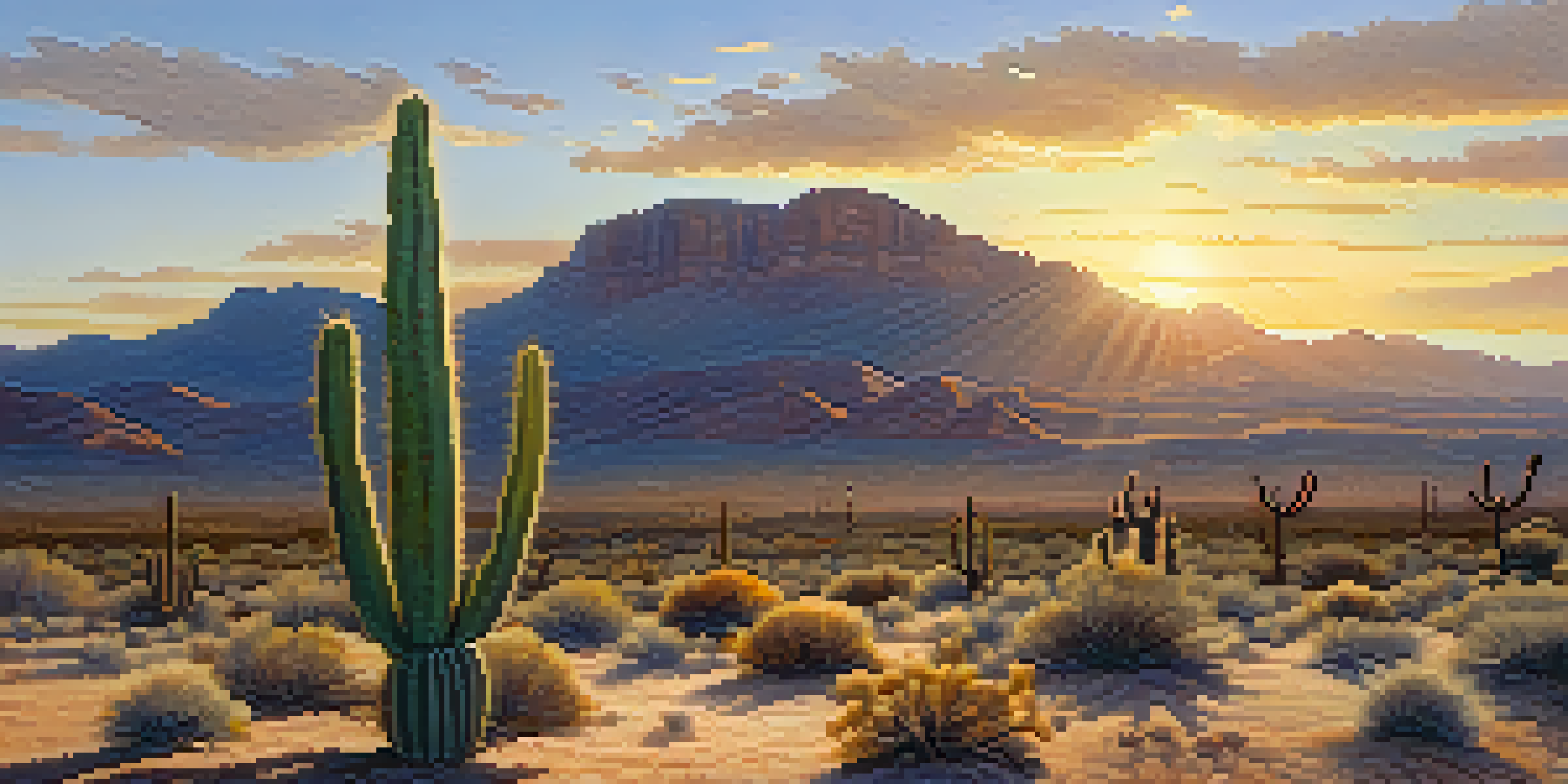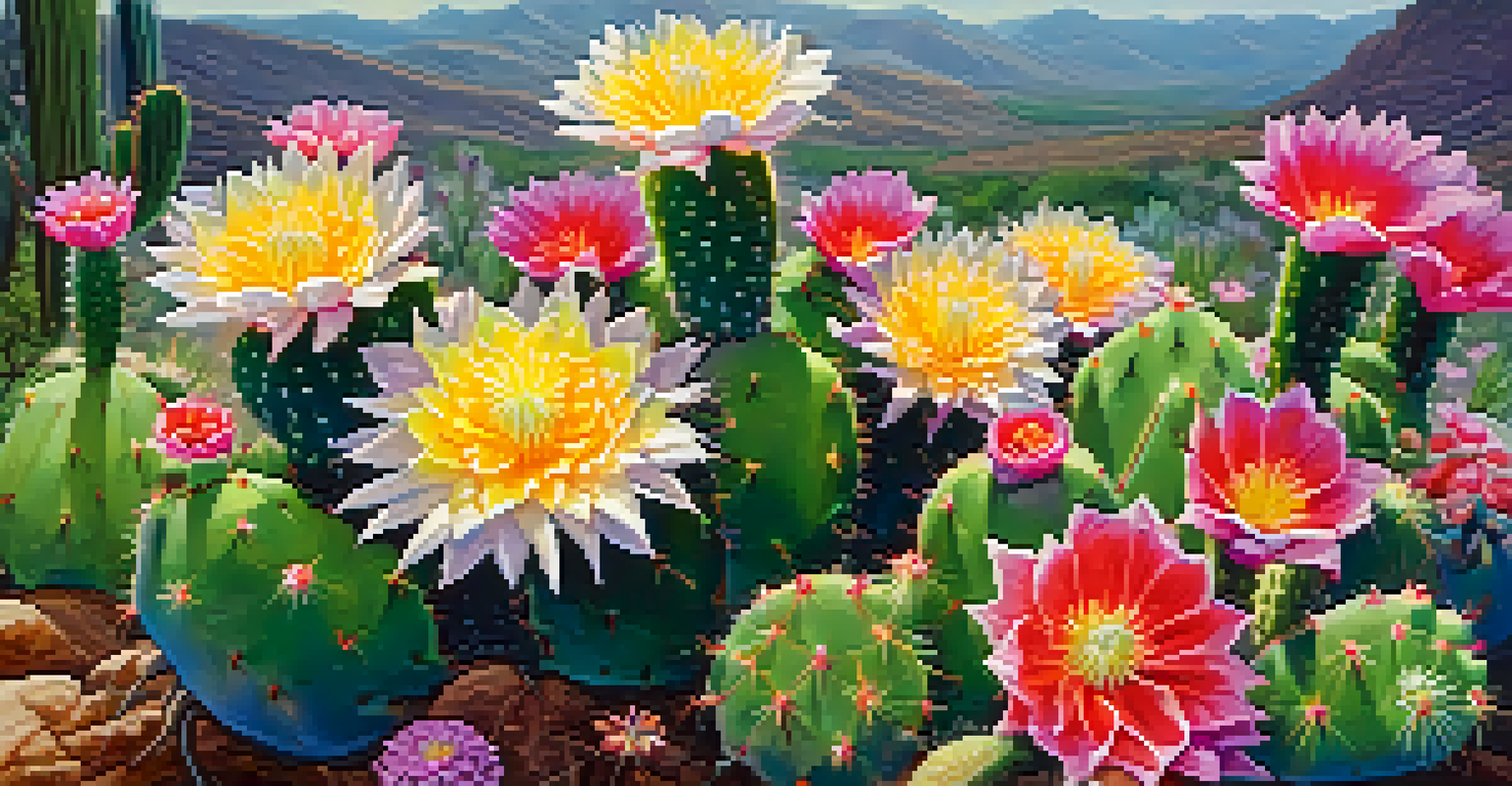Ecological Awareness Through Peyote: A Path to Healing Earth

Understanding Peyote: A Sacred Plant with Deep Roots
Peyote, a small cactus native to Mexico and the southwestern United States, has a long history of spiritual and medicinal use among Indigenous peoples. For centuries, it has served not only as a tool for personal healing but also as a means of connecting with nature. Its psychoactive properties allow users to experience profound insights into the interconnectedness of life, which can foster a sense of responsibility toward the environment.
The earth does not belong to us: we belong to the earth.
In many cultures, peyote is more than just a plant; it's considered a teacher. The experiences derived from its consumption often lead individuals to reflect on their relationship with nature. This deepened awareness can inspire a commitment to ecological preservation and a more sustainable way of living.
Thus, peyote acts as a bridge between personal healing and ecological consciousness. By engaging with this sacred plant, individuals can cultivate a greater understanding of their role in the ecosystem, highlighting the importance of respecting and protecting our planet.
The Role of Traditional Knowledge in Ecological Awareness
Indigenous cultures have long recognized the wisdom found in nature, and this knowledge is often intertwined with practices involving peyote. For these communities, ecological awareness is not just a modern concept; it's a way of life that has been passed down through generations. This traditional knowledge emphasizes the importance of living in harmony with the environment and understanding the consequences of human actions.

Through peyote ceremonies, participants are often guided to reflect on their place within the natural world. These experiences can lead to transformative insights about the balance of ecosystems and the critical role of biodiversity. Such realizations can spark a desire to advocate for environmental protection and sustainability.
Peyote as a Teacher for Healing
Peyote serves as a bridge between personal healing and ecological awareness, inspiring individuals to connect with nature and advocate for environmental preservation.
Incorporating traditional ecological knowledge can enrich modern environmental movements. By valuing the wisdom of Indigenous cultures, we can create a more holistic approach to addressing ecological issues, ultimately leading to a healthier planet.
Psychedelics and the Environment: A Growing Interest
In recent years, there has been a resurgence of interest in psychedelics, including peyote, as tools for personal and collective healing. Researchers and enthusiasts alike are exploring how these substances can foster not only mental well-being but also ecological awareness. The idea is that by expanding consciousness, individuals may develop a greater appreciation for the natural world.
In every walk with nature one receives far more than he seeks.
Studies suggest that psychedelics can enhance feelings of connection to nature, leading to pro-environmental behavior. For many, experiences under the influence of peyote can evoke a sense of oneness with the earth, prompting a commitment to sustainability and environmental activism. This growing body of research highlights the potential of psychedelics to drive social change.
As more people share their transformative experiences with peyote, the conversation around ecological responsibility continues to evolve. This intersection of psychedelics and environmentalism offers new pathways for healing both individuals and the planet.
Ecological Restoration: A Journey of Healing
Peyote can inspire individuals to engage in ecological restoration efforts, promoting a hands-on approach to healing the planet. Just as the plant is revered for its ability to heal the mind and spirit, so too can we view restoration as a way to mend our relationship with the earth. This process can take many forms, from reforestation projects to urban gardening initiatives.
By participating in these restoration efforts, individuals can translate their newfound ecological awareness into tangible actions. Whether it’s planting trees or cleaning up local waterways, these activities foster a sense of community and shared purpose. Engaging with the land in this way can deepen one's connection to nature, reinforcing the lessons learned through peyote experiences.
Traditional Knowledge Enriches Ecology
Incorporating Indigenous ecological wisdom enhances modern environmental movements, fostering a deeper understanding of our relationship with the earth.
Ultimately, ecological restoration is about more than just planting trees; it's about cultivating a culture that values and respects the environment. Through the lens of peyote, we can view these efforts as a form of collective healing, not only for ourselves but for the planet as a whole.
Mindfulness and Ecological Stewardship
The practice of mindfulness, often enhanced by experiences with peyote, can significantly contribute to ecological stewardship. By being present and aware of our surroundings, we can develop a deeper understanding of the natural world and its needs. This heightened awareness encourages us to take responsibility for our actions and their impact on the environment.
Mindfulness practices can help individuals cultivate gratitude for the earth's resources, fostering a desire to protect and preserve them. When we become attuned to the beauty and fragility of our ecosystems, it becomes easier to make choices that align with ecological sustainability. This shift in perspective can lead to more conscious consumer habits and advocacy for environmental policies.
Through the lens of mindfulness, ecological stewardship transforms from a chore into a fulfilling responsibility. The lessons learned from peyote can serve as a guiding force, reminding us of our interconnectedness and the importance of caring for our planet.
Building Community Through Ecological Awareness
The journey toward ecological awareness through peyote can also foster a sense of community among like-minded individuals. As people share their experiences and insights, they often find common ground in their passion for protecting the environment. This shared purpose can lead to the formation of supportive networks dedicated to ecological advocacy and action.
Community-building initiatives can take many forms, such as local workshops, clean-up events, or educational programs that emphasize sustainability. These gatherings provide an opportunity for individuals to connect, share knowledge, and inspire one another. The collective energy generated by these communities can amplify efforts toward environmental restoration and awareness.
Community and Ecological Action
Shared experiences with peyote can cultivate community, empowering individuals to engage in collective efforts for environmental restoration and advocacy.
By nurturing these connections, individuals can feel empowered to take action and make a difference. The combined strength of these communities can create a ripple effect, promoting ecological awareness and stewardship on a larger scale.
A Vision for the Future: Healing Earth and Ourselves
As we reflect on the relationship between peyote and ecological awareness, a vision for the future emerges—one where healing the earth goes hand in hand with healing ourselves. This holistic approach encourages us to view nature as a partner in our well-being, rather than as a resource to exploit. By embracing this perspective, we can cultivate a more sustainable and respectful relationship with the planet.
The lessons learned from peyote experiences can guide us in our efforts to create a more just and equitable world. By prioritizing ecological awareness and stewardship, we can work together to address pressing environmental challenges, from climate change to habitat destruction. This collective effort can inspire future generations to continue this vital work.

Ultimately, the journey toward ecological awareness through peyote is a reminder of our interconnectedness. As we strive to heal the earth, we also embark on a path of personal growth and transformation, paving the way for a healthier, more sustainable future for all.